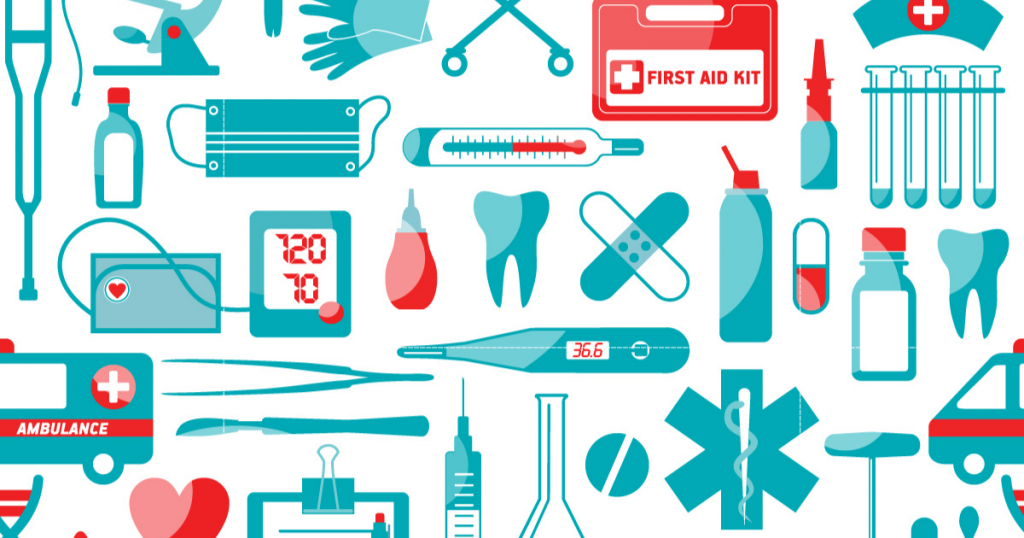A large number of projects and technologies end up as proof of concept or set of research publications. Testing at concept stage or prototype is difficult unless a suitable medical professional / department is involved in the process.
Modern healthcare is highly dependent on use of medical devices. These are increasingly becoming essential for delivery of quality healthcare. Unfortunately, over 80% of our medical devices and systems are imported. It is widely believed that the Indian medical devices industry has an opportunity to leapfrog. More so, in the wake of Govt. recent imperatives and initiatives for ‘ ‘‘swadeshi’ technologies. No wonder, medical device development is an important part of the initiatives of several Govt. funding agencies including DST, BIRAC, MeitY, etc. However, the sponsored projects often end up as research articles for a journal and further development is quite often lacking. It is important to understand that not only the technology and the product scenario are dynamic but also the prototype-to-product journey is a challenging task. As a first step, understanding the market and its dynamics is very important. Some of the key features of the domain include :
1. Research in this area needs multidisciplinary commitment
As medical devices are meant to interface human bodies and need advanced electronics technologies so excellence is desirable in multiple domains. Knowledge and skills in electronics / IT, Biomedical engineering as well as detailed understanding of human anatomy/ physiology is essential for working in this area. Additionally mechanical / physical design / ergonomics and market knowledge is also very important. This can be achieved by proper collaborative approach only. It is important to understand that the medical professional has a key role to play in the whole process and most often they are unable to spare sufficient time.
2. Domination of imported products
The medical device market is dominated by imported products, which comprise around 80% of total sales. The domestic companies are largely involved in manufacturing low-end products for local and international market. Lately, many multinational companies have established local presence by acquiring established domestic companies or starting a new business. So, you are in a way competing with international products.
3. Lack of successful indigenous medical products: The irony
Research and development in the domain of medical devices is very challenging. While reaching proof of concept level may be a bit easy and interesting; but taking the product to final technology readiness levels (industry grade / marketable products) is rather difficult and tedious. To start with, as it is easy for researchers to relate with the human body, the subject is highly appealing. With some study and skills, conception and proof of concept also becomes feasible. However, the real problems start after this. A large number of projects and technologies end up as proof of concept or set of research publications. Testing at concept stage or prototype is difficult unless a suitable medical professional / department is involved in the process. Often public healthcare institutions are highly overburdened and so, clinical trials become very difficult. Further, in the absence of information on functional testing, performance evaluation and lack of facilities to undertake such activities, it becomes very difficult to demonstrate / evaluate the worth of the developed technology.
In spite of a very good number of medical device enthusiasts an equivalent translation to successful products is limited.

4. Medical device marketing is a tough nut to crack
Next, assuming a good product is developed, the medical device market is very dynamic and multi-dimensional. The medical device industry in India is presently valued at USD 5.2 Billion and is growing at 15.8% CAGR. Currently, India is counted among the top 20 global medical devices market and is the 4th largest medical devices market in Asia after Japan, China and South Korea and is poised to grow to USD 50 billion by 2025 as per some industry estimates. And so, a host of international companies and imported medical products dominate the markets. Proper aesthetics, performance and certifications play a very important role. Also, every practitioner wishes to buy only the best product (and not just any product) so the quality criteria is very important and the competition is fierce. So, there is a demand for people with a marketing background.
Thus, in spite of a very good number of medical device enthusiasts an equivalent translation to successful products is limited. So, there is a need for engineers and researchers with practical (hands on work) and medical device market exposures. The commitment and the ‘open-mind’ approach of the involved medical practitioners is essential for successful translation into products. To summarise, following considerations are suggested to developer/ researcher to reach a successful translation to medical device product:
- Take the collaborative approach: Collaboration of a research and a translation organisation is a must. Preferably a medical department should also be associated from the beginning. Involvement of industry from beginning may be counterproductive (as it limits the scope to one or few establishments only. instead open calls inviting participation towards the end can be more effective).
- Involve market information at an early stage: It may be preferable to involve a suitable person (preferably an expert with MBA and M.Tech in related areas) at the time of evaluation and review stages. He may be able to give some suggestions.
- Consider challenges of prototype-to-product journey: The prototype-to-product journey is probably the most critical and one of the most difficult. So, the easiest answer to this is just do not try to do everything by yourself. Involve professional / experienced groups for the complexities.
- Of course, last but not the least, do protect your IPR appropriately.
Happy journey to successful products.
Composed by: “Dr. Jaspal Singh is head of electronics group at CDAC, Mohali and has several projects to his credit.”

